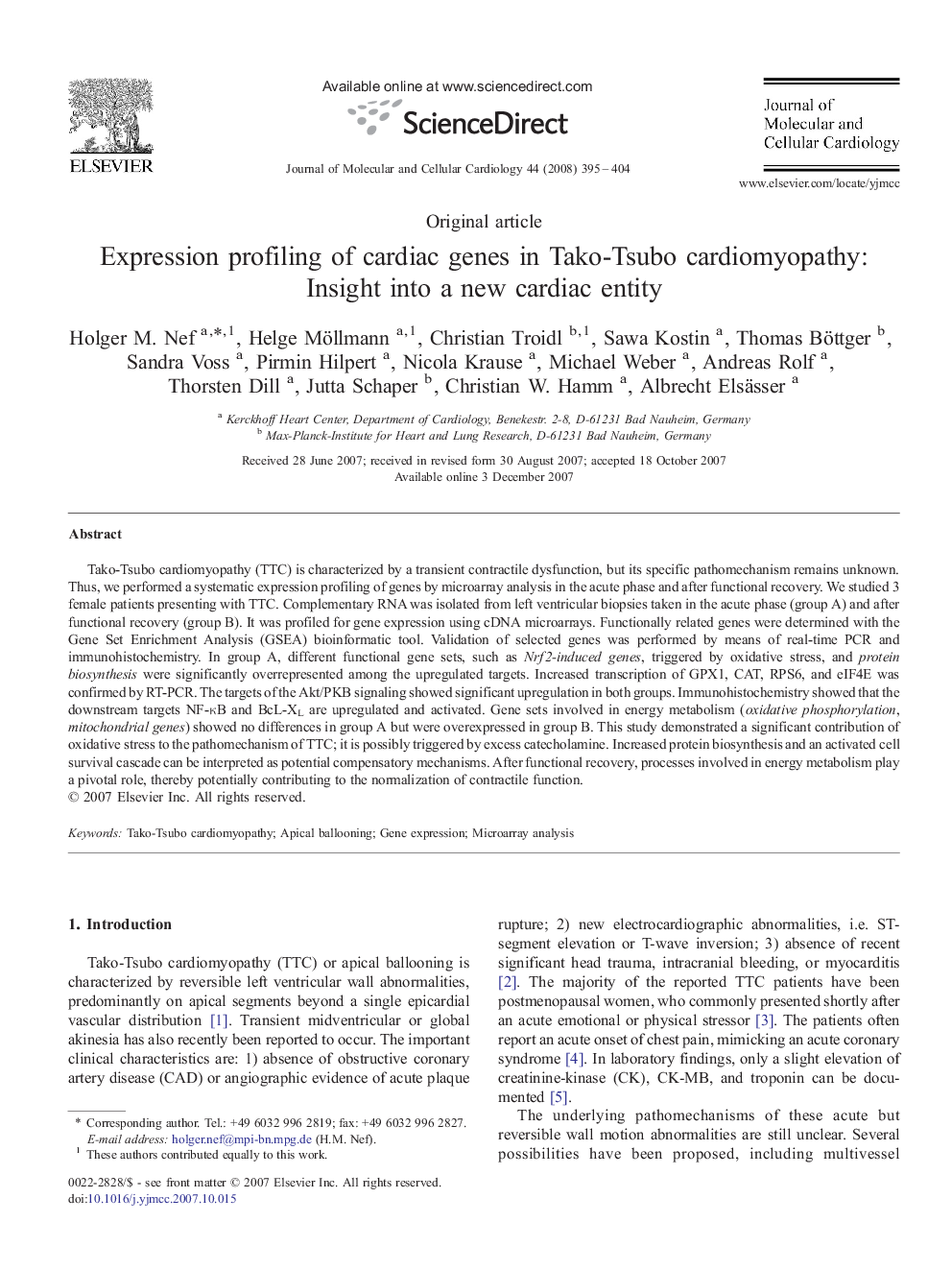| Article ID | Journal | Published Year | Pages | File Type |
|---|---|---|---|---|
| 2191463 | Journal of Molecular and Cellular Cardiology | 2008 | 10 Pages |
Tako-Tsubo cardiomyopathy (TTC) is characterized by a transient contractile dysfunction, but its specific pathomechanism remains unknown. Thus, we performed a systematic expression profiling of genes by microarray analysis in the acute phase and after functional recovery. We studied 3 female patients presenting with TTC. Complementary RNA was isolated from left ventricular biopsies taken in the acute phase (group A) and after functional recovery (group B). It was profiled for gene expression using cDNA microarrays. Functionally related genes were determined with the Gene Set Enrichment Analysis (GSEA) bioinformatic tool. Validation of selected genes was performed by means of real-time PCR and immunohistochemistry. In group A, different functional gene sets, such as Nrf2-induced genes, triggered by oxidative stress, and protein biosynthesis were significantly overrepresented among the upregulated targets. Increased transcription of GPX1, CAT, RPS6, and eIF4E was confirmed by RT-PCR. The targets of the Akt/PKB signaling showed significant upregulation in both groups. Immunohistochemistry showed that the downstream targets NF-κB and BcL-XL are upregulated and activated. Gene sets involved in energy metabolism (oxidative phosphorylation, mitochondrial genes) showed no differences in group A but were overexpressed in group B. This study demonstrated a significant contribution of oxidative stress to the pathomechanism of TTC; it is possibly triggered by excess catecholamine. Increased protein biosynthesis and an activated cell survival cascade can be interpreted as potential compensatory mechanisms. After functional recovery, processes involved in energy metabolism play a pivotal role, thereby potentially contributing to the normalization of contractile function.
